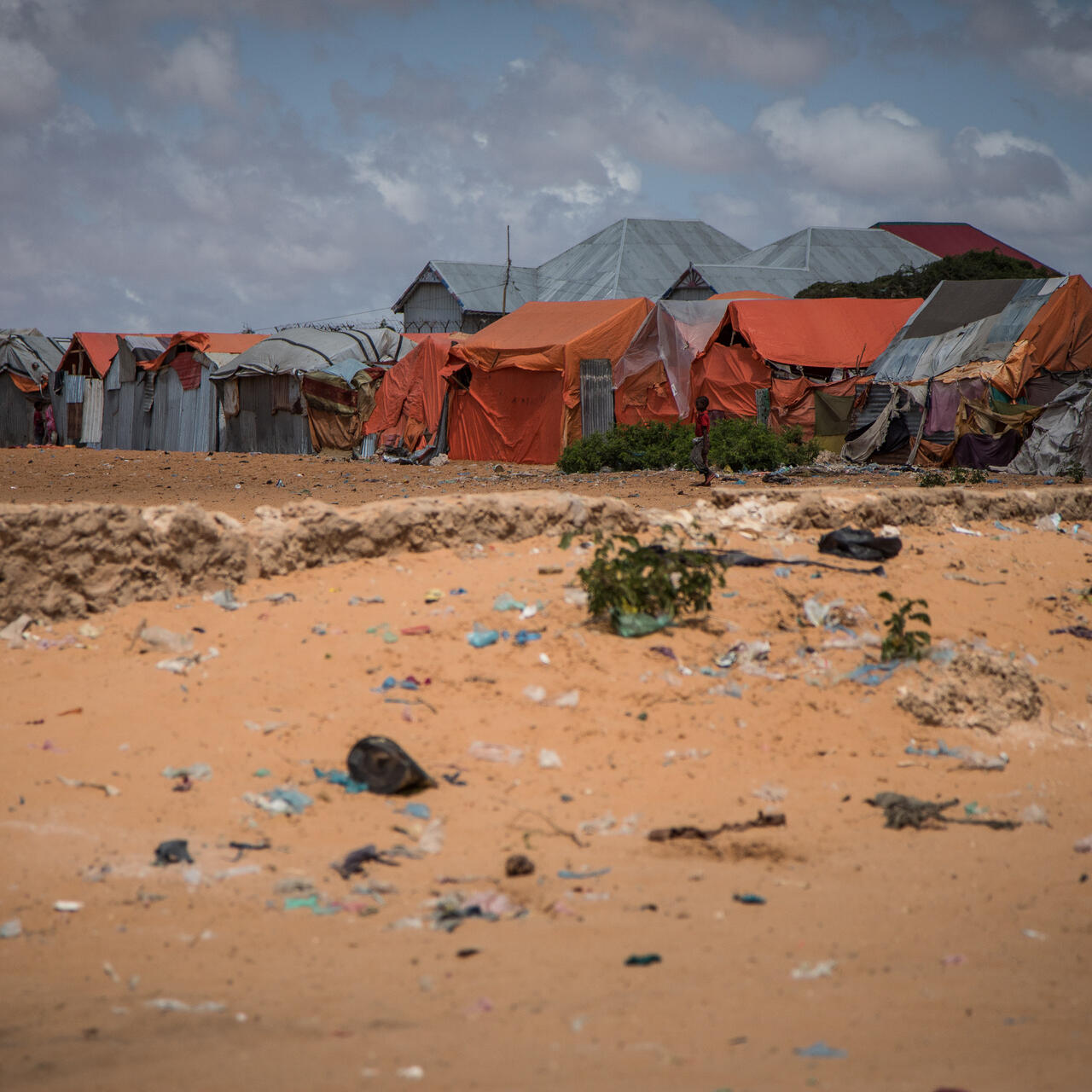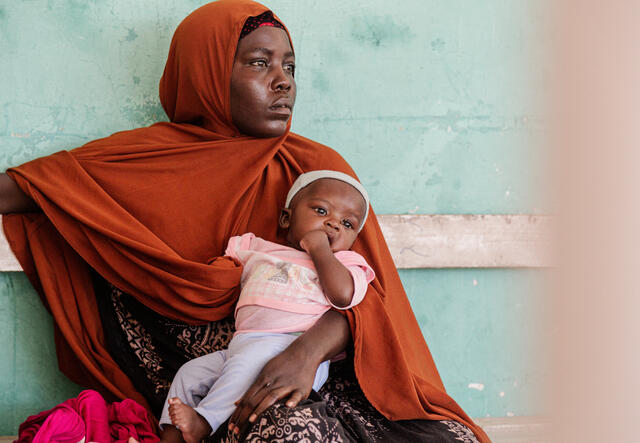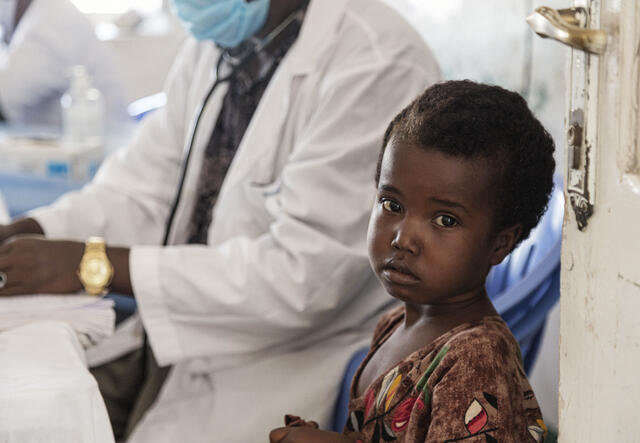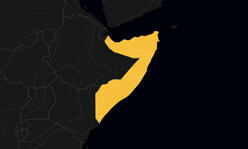
Crisis in Somalia: Aid workers hampered as needs rise
Here are five reasons the International Rescue Committee’s Emergency Watchlist ranks Somalia among countries most at risk of worsening humanitarian crisis in 2022.

Here are five reasons the International Rescue Committee’s Emergency Watchlist ranks Somalia among countries most at risk of worsening humanitarian crisis in 2022.
Update—July 19, 2022: With a catastrophic famine looming on the horizon across East Africa, the International Rescue Committee (IRC) has released its first ever Crisis Alert update to its annual Emergency Watchlist today, highlighting that over 3 million people could die without urgent international funding. Learn more about the famine threat.
Somalia has been on the Emergency Watchlist for nine consecutive years but has moved into the Top 10 (at number eight) due to escalating political tensions and the risk of both drought and renewed violence. Here's what you need to know about the growing humanitarian crisis in Somalia.
Delays to the presidential election originally scheduled to take place in late 2020 have added to political tensions in Somalia, leading to clashes with opposition forces as President Mohamed Abdullahi “Farmajo” Mohamed’s term ended in early 2021. Divisions between the president and Prime Minister Mohamed Hussein Roble have exacerbated the overall political polarization, as have the delayed presidential elections, which are now not likely to take place until the first half of 2022.
Meanwhile, fighting continues between al-Shabab and government and international forces. This conflict, paired with the impacts of climate change, has uprooted 2.9 million people from their homes, making Somalia one of the five worst internal displacement crises in the world. Drought conditions are expected to worsen during the next year as the United Nations says the number of people in need has grown from 5.9 million to 7.7 million.

Parliamentary and presidential election delays led to armed confrontations, with 207,000 Somalis displaced in April 2021 alone. Civilians have borne the brunt of this violence as clan militias, security forces and al-Shabab have all been accused of human rights violations, according to Human Rights Watch. As Somalia’s elections are pushed deeper into 2022, there is a significant risk of additional disputes and armed confrontations that will cause more violence against civilians and displacement.
The African Union’s Amisom peacekeeping force has played a central role for 14 years, but discussions about extending its mandate beyond 2021 have been delayed amid reports that the Somali government opposes African Union proposals to bring in more foreign troops. Meanwhile, Ethiopia—number two on Watchlist 2022—has contributed soldiers to Amisom and separately deployed troops in Somalia. Given the various crises facing Ethiopia, it is unclear what role Ethiopian forces will play in 2022. A rapid departure of Amisom or Ethiopian forces could destabilize the country and lead to both greater political tensions and escalation with al-Shabab.
An estimated 3.5 million Somalis were experiencing crisis or worse levels of acute food insecurity at the end of 2021,and at least 3.4 million people were projected to be affected by drought by the end of the year. Somalia experienced its third consecutive below-average rainfall season since late 2020, contributing to below-average crop production, worsening grazing conditions for livestock, and raising the cost of staple foods. Desert locusts remain a serious risk to crops and pastureland and could lead to food shortages. Given these conditions, food insecurity and malnutrition are likely to increase in 2022, putting millions at risk.
Somalia’s preparedness for disease outbreaks ranks among the lowest globally, 194th (of 195 countries) on the Global Health Security Index. As of December 2021, just 3.5% of Somalis were fully vaccinated against COVID-19, making the country more vulnerable to future waves of transmission. Other communicable diseases such as cholera and measles continue to pose serious health risks to Somalis.

Humanitarian access worsened between 2020 and 2021. Attacks by al-Shabab—sometimes targeted at aid workers—inter-clan conflict, administrative and bureaucratic barriers, and poor infrastructure are all factors in limiting access and movement of humanitarians across the country, hampering efforts to serve the 7.7 million Somalis in need.
Read more about the top 10 crises the world can’t ignore in 2022, learn how the IRC selected these countries, and download the full 2022 Emergency Watchlist report for data citations and profiles of all 20 crisis countries on the IRC's list.

The IRC first began assisting Somalis in 1981, and today we support communities in Galmudug, Southwest and Puntland states, as well as in the Banadir (Mogadishu) region.
We support Somalis’ economic wellbeing through job training, food vouchers and direct cash assistance to farmers, shepherds and small business owners. We also partner with communities to identify, plan and manage development projects. Our work with groups like children and women who are particularly at risk of violence is informed by the promotion and protection of human rights.
Learn more about the IRC’s Somalia response.
Donate now to support the IRC's life-changing work in Somalia and worldwide. We are on the frontlines providing critical aid to crisis-affected people in more than 40 countries, including places on the 2022 Emergency Watchlist.